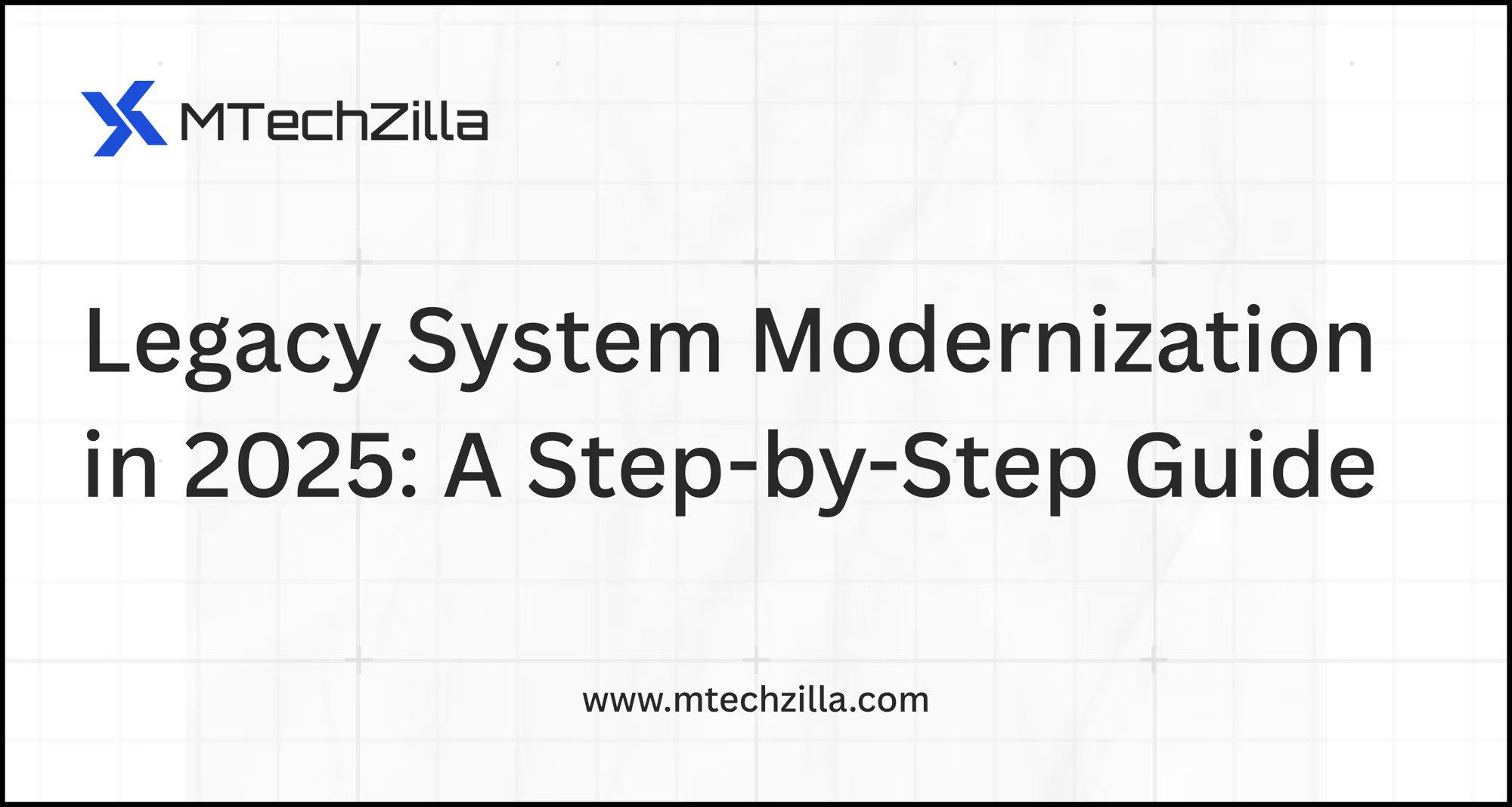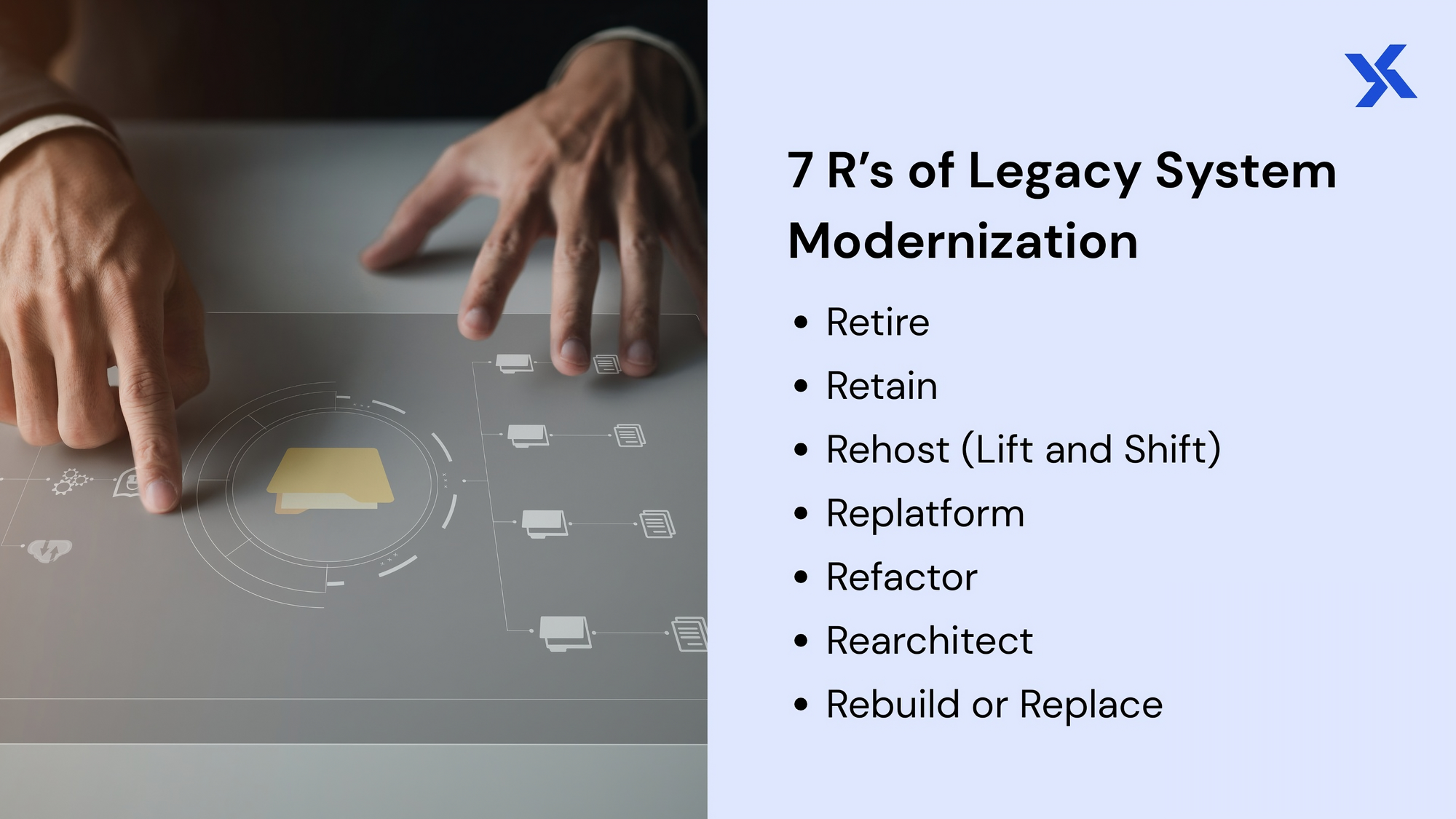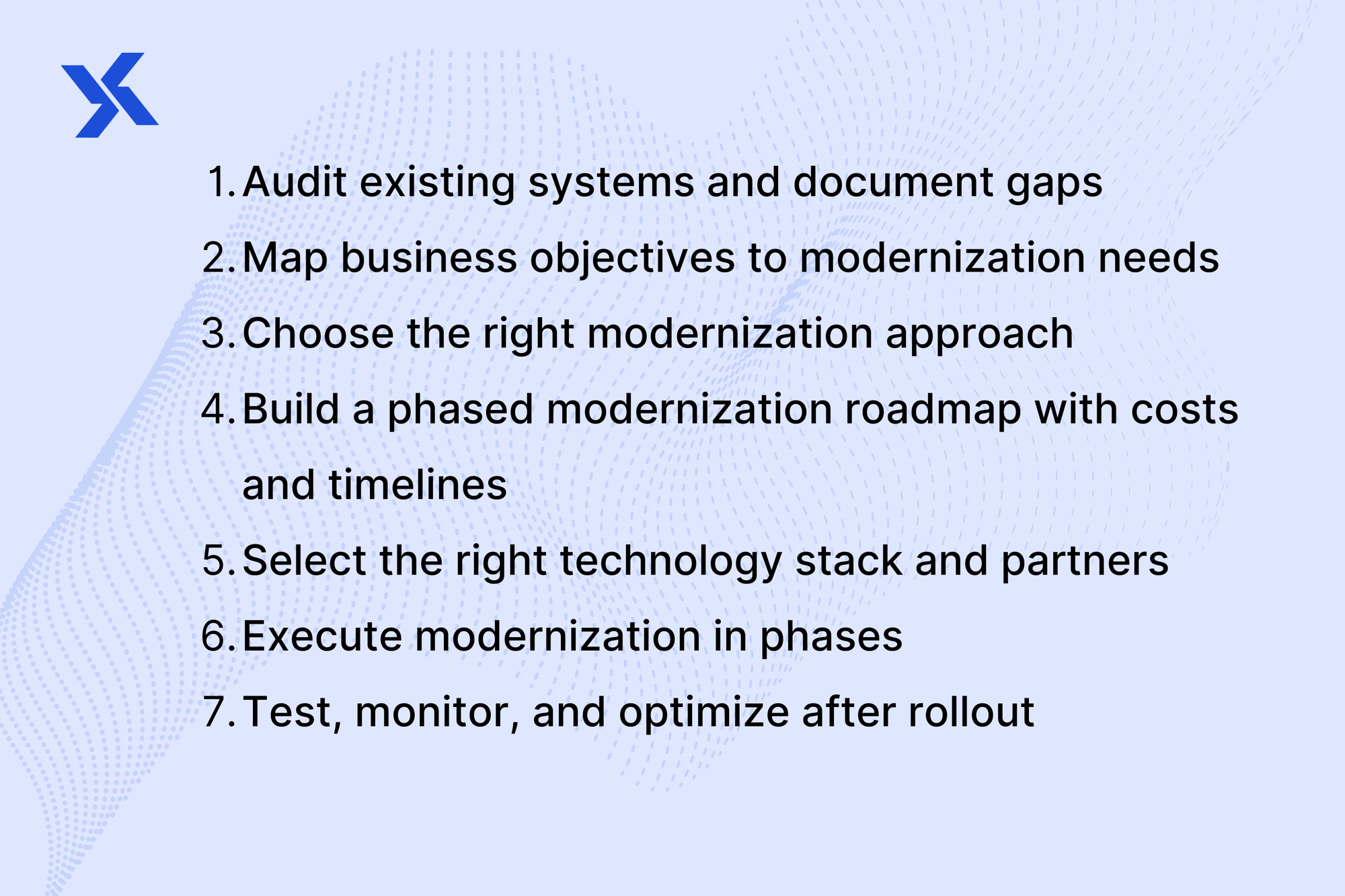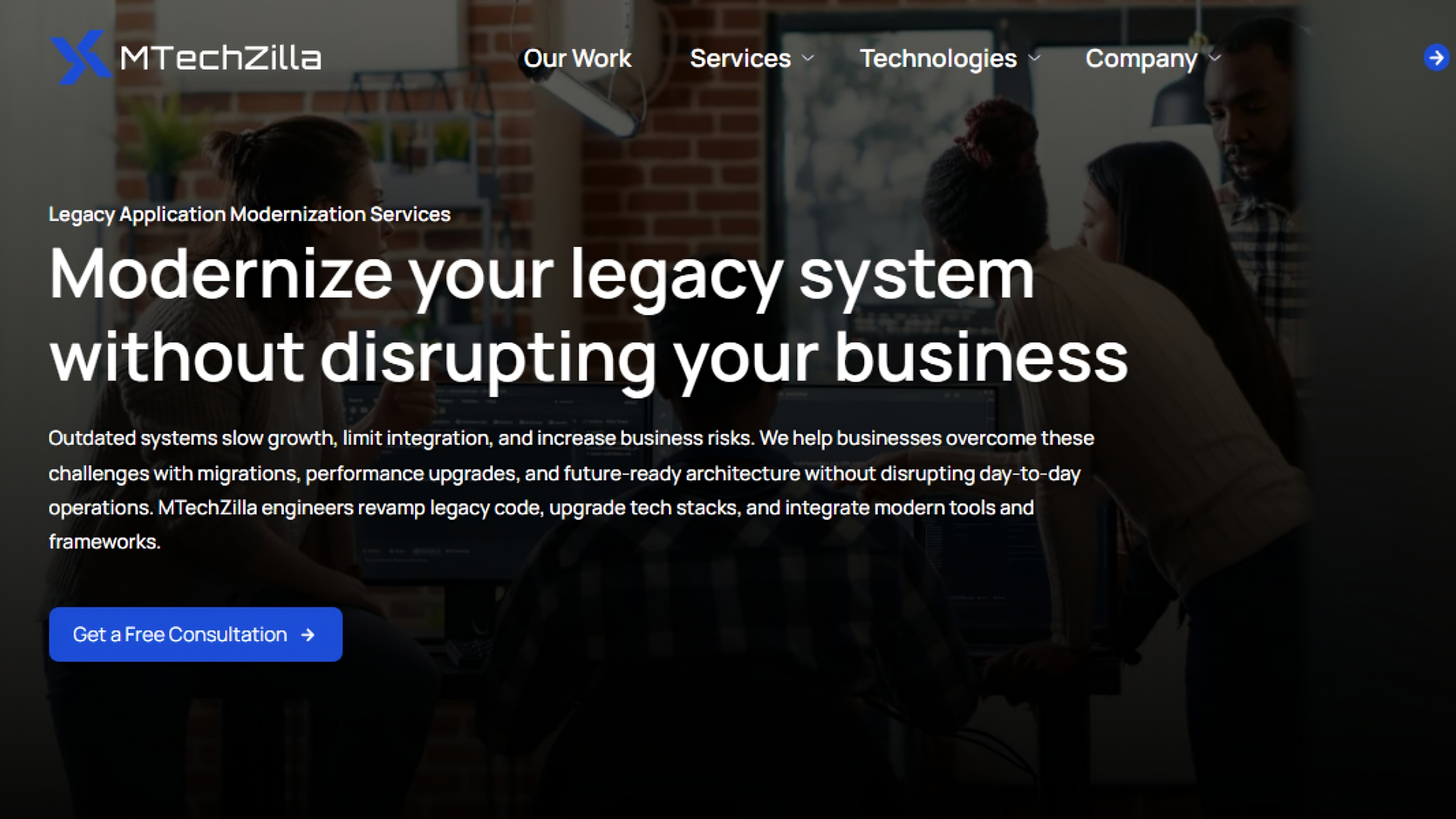August 7, 2025
10 min read

If you are reading this, there’s a strong chance your business is still running on a legacy system, and you’re starting to feel the weight of it. Legacy applications once played a critical role, but in today’s fast‑changing market, they often act as roadblocks to agility and growth.
The numbers confirm this urgency:
Clearly, modernization is not just a technical upgrade, it is a business necessity. Companies across industries are realizing that without a modernization strategy, they risk falling behind in efficiency, customer experience, and overall competitiveness.
In the following sections, we will walk through what legacy system modernization really means in 2025 and the practical steps you can take to modernize your legacy systems without disrupting business operations.
Legacy system modernization is the process of transforming outdated business technology, including applications, infrastructure, databases, and processes, into modern, agile, and scalable systems that meet today’s digital requirements.
It doesn’t just mean rewriting old code. Modernization may involve:
In simple words, modernization is about future‑proofing your entire IT ecosystem, not just your software.
A system needs legacy system modernization when it creates more challenges than value for your business. In simple terms, if your technology is slowing you down instead of supporting growth, it’s time to modernize.
Let’s look at the real signs you should watch for:
In short, your system is legacy if it eats up your budget, slows down innovation, and keeps your business from adapting to what the market demands today.
Here’s where many businesses get confused. Just because a system is old doesn’t mean it’s useless. If your application is stable, secure, and still meeting business needs, it may not require immediate replacement.
But the turning point comes when:
That’s when you know modernization is no longer a choice; it’s a necessity.
The 7 R's of legacy system modernization are retire, retain, rehost, replatform, refactor, rearchitect, and rebuild or replace.
Each one offers a different path, depending on your system’s condition and your business priorities. Let’s walk through each one and see what it means, when to use it, and how it helps your business.

Sometimes the smartest move is to shut a system down. Retiring means phasing out applications that no longer serve a purpose. The goal is to reduce costs, remove clutter, and simplify IT. If a tool is barely used, outdated, or duplicated elsewhere, keeping it alive only wastes resources.
Example: Many companies retire old in‑house reporting tools after adopting Power BI or Tableau, which already cover all reporting needs.
Not all legacy systems are bad. If an application is stable, secure, and cost‑effective, you can retain it. This allows you to focus modernization efforts where they matter most. Retaining makes sense if the system is still delivering value without causing headaches.
Example: A manufacturing company may continue using a reliable on‑premise accounting system that integrates smoothly with its financial workflows, while modernizing other tools like CRM or HR software.
Rehosting means moving your application from on‑premise servers to the cloud without changing its code. It’s a fast way to cut costs, improve infrastructure, and gain flexibility. You choose this when you want quick wins without major changes.
Example: A healthcare provider moved its patient records system to AWS for better uptime and lower maintenance costs, without changing the software itself.
Replatforming goes a step further. You move your system to a new platform and make small improvements along the way so it runs more efficiently. The aim is to unlock some cloud benefits such as scalability or managed databases without doing a full rebuild.
Example: An online retailer replatformed its e‑commerce site to Microsoft Azure and switched to a managed SQL database, improving performance during seasonal traffic spikes.
Refactoring is like cleaning up your code. You reorganize and optimize it so it’s easier to maintain, but the system still works the same way for end users. The goal is to reduce technical debt and make future updates faster and cheaper.
Example: A logistics company refactored its legacy tracking app by breaking a huge monolith into microservices, allowing them to add new features like GPS tracking without slowing down the entire system
Rearchitecting is more advanced. Instead of just cleaning up code, you redesign the system so it can fully use modern technologies like APIs, containers, or cloud‑native services. The aim is to make the system scalable, flexible, and future‑ready.
Example: A traditional bank rearchitected its core system to support real‑time mobile payments, enabling customers to transfer money instantly instead of waiting days.
When a system is beyond saving, the only solution is to rebuild it from scratch or replace it with a modern product. Rebuilding gives you a fresh start tailored to your needs, while replacing leverages ready‑made solutions. The goal is to eliminate outdated limitations completely.
Example: A retail chain replaced its old CRM with Salesforce to give sales teams mobile access and AI‑powered insights, while another rebuilt its ERP system as a cloud‑native application to handle global operations more efficiently.
In short, the 7 Rs give you a flexible roadmap. Some systems can be retired, others rehosted, and a few may need to be rebuilt. The right mix depends on how critical each system is, how much value it brings, and how ready your business is for change.
Are you wondering how to actually modernize your legacy system? You already know it’s important, but the big question is: where do you start, what does it take, and how do you make sure it doesn’t disrupt your business?
Here are the key steps most businesses follow when modernizing legacy systems:

Let’s go step by step.
The very first step in modernization is knowing exactly what you’re dealing with. Too many companies jump into cloud migrations or new platforms without a clear system audit, and that’s why projects fail. The goal is to find what’s working, what’s outdated, and what’s actively hurting your business.
Here’s what this step usually involves:
Without this audit, you risk wasting money modernizing apps that don’t matter or missing hidden risks that will blow up later.
Modernization should directly support your business outcomes, not just upgrade technology. Once you know where your systems stand, align modernization with what your organization actually wants to achieve.
This step includes:
The aim is to create a modernization priority map linking goals with systems to target first. It helps ensure investments are justified and IT changes deliver real business value.
Once you know your pain points and goals, the next step is choosing how to modernize each system. Not every app needs the same approach. This is where the 7 Rs come in: retire, retain, rehost, replatform, refactor, rearchitect, or rebuild or replace.
This step includes:
The aim is to select the best modernization approach for each system, not a one‑size‑fits‑all strategy. It helps prevent wasted effort and ensures every upgrade delivers maximum value with minimal disruption.
At this point, you know what needs fixing and how you’ll approach it. The next move is to plan the journey. A modernization roadmap lays out which systems get modernized first, how long it will take, and how much it will cost. Without this, projects often stall or go over budget.
This step includes:
It eventually helps keep projects on track, avoid cost overruns, and give leadership visibility into progress.
Technology alone doesn’t guarantee success. The right tools and the right people do. In this step, you decide which cloud platform, software tools, and implementation partners best fit your business. Most companies also bring in external experts to avoid costly mistakes.
This step includes:
This will ensure smoother implementation, reduce risks, and set you up for long‑term scalability.
Modernization is rarely successful when done all at once. Service providers usually follow a phased approach, which allows them to test new systems while keeping old ones running. This way, you reduce disruption and uncover issues before scaling.
This step includes:
Roll out modernization step by step while keeping business operations stable.
Going live is not the end of modernization. It requires continuous testing and monitoring long after implementation to ensure the system performs as expected. The real value comes from ongoing optimization and improvements.
This step includes:
Prevents bottlenecks, strengthens security, and guarantees modernization investments deliver lasting value.

If you have read this far, you already know that modernization is not just about upgrading technology, it is about preparing your business for the future. Different industries face different challenges.
It is always better to start small and focus on the systems that create the most friction. Involving teams early is essential because modernization works best when business and IT move together. The right partner also helps avoid costly mistakes and speeds up results.
This is where MTechZilla can support you. We provide legacy application modernization services specially for startups and tailored to specific industries, covering everything from cloud migration and microservices to UI redesign, API integration, and AI adoption. Modernization is not just an IT expense, it is an investment in efficiency, security, and growth.


Share your product idea and challenges

Discuss possible approaches and solutions

Define a roadmap for your project